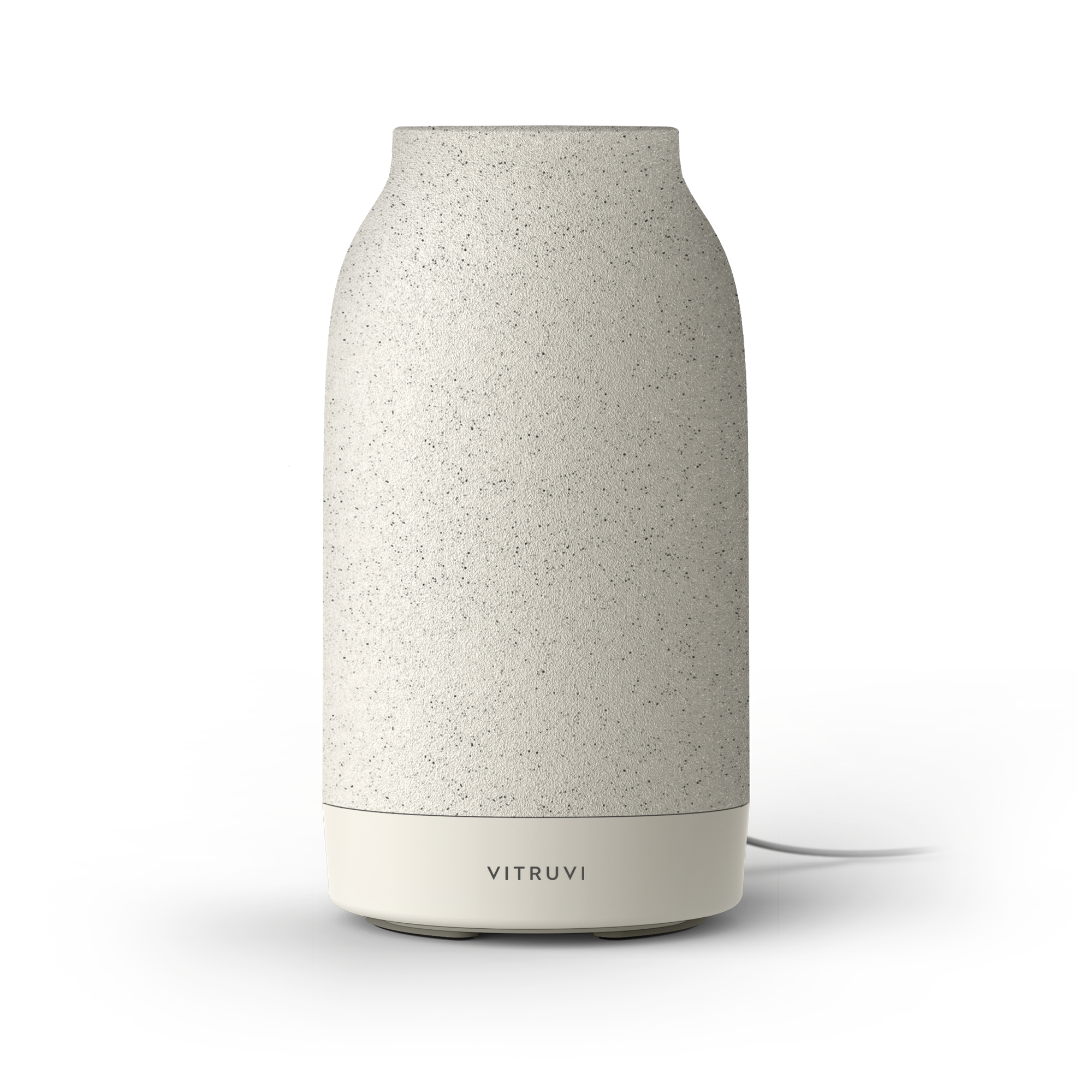Collagen is one of the buzziest ingredients in the beauty industry right now, touted for its many benefits: smoother skin, stronger nails, shinier hair.
The truth is that we lose about one per cent of this naturally-occurring structural protein every year. But it’s never too late to start gently encouraging our bodies to produce more.
What is collagen and what does collagen do?
“There’s a lot of really interesting biochemistry behind it,” says Dr. Adelyn Ho, a board-certified plastic surgeon at Dermapure in Vancouver. “It’s the most abundant structural protein in the body, accounting for about 30 per cent of our whole body protein.” From skin to bones and muscles to ligaments, collagen forms the connective tissue throughout our bodies and provides support to an extracellular matrix (“that is basically support for cell function,” Ho explains). The word “collagen” itself comes from the Greek word meaning “glue-producing,” which makes sense given that we can think of collagen as the scaffolding that holds our bodies together, providing strength and structure.
What is collagen made of?
To get even more technical, collagen is a triple-helix protein, which in non-science terms means it consists of three strands coiled together to create one strong molecule. It’s a big, complex protein that Ho describes as “a rope-like structure,” with amino acids as building blocks. When we’re young, the rope remains tight; but as we age, the ends begin to fray.
Even if you don’t know it, your relationship with collagen is complicated
“There’s always collagen breakdown and there’s always collagen production,” Ho explains. “It’s happening all the time.” Young tissue has a very high rate of collagen synthesis; this means collagen production is going to exceed collagen breakdown. But as we approach our thirties, that begins to shift.
“We know that at age 30, we see a lot of degenerate changes in the skin,” Ho says. “When you look at the cellular level, we are seeing that the dermis, the skin, is not as thick as someone who is really young—and that’s largely due to the total amount of collagen that is decreased.” The thickness of our skin, she explains, lessens by an average of six per cent per decade.
How can we increase collagen production?
Smoking, poor diet, and too much caffeine will all contribute to collagen production slowing down dramatically, giving way to fine lines and thin skin. Aside from limiting those things, perhaps the easiest way we can protect our bodies’ collagen health is with sunscreen.
It’s no secret that too much sun exposure is bad for the skin. Ultraviolet rays not only damage the elasticity of the skin and cause wrinkles, but can also deeply impair collagen production. “We know that there are these enzymes called matrix metalloproteinases that break down the collagen in our skin, and you get more of those when you have exposure to the sun,” Ho explains. So, something as simple as applying sunscreen will protect the skin by absorbing, blocking, and scattering UV rays.
Antioxidants and topicals for stimulating collagen production
Topical collagen skincare products can be a nice short-term solution for promoting hydration and improving complexion, but these serums and lotions can’t actually be absorbed through multiple layers of the skin because collagen molecules are too large. That means only the outermost layer of the skin is benefiting.
Really, when it comes to increasing collagen production, there’s no one quick skincare fix—but antioxidants can definitely help. According to Ho, we can use them to guard our skin from photodamage, combat visible signs of aging, and reduce inflammation. And while there are many different types of antioxidants for the skin, two in particular work wonders for regulating the synthesis of collagen: Vitamin C and retinol.
At Vancouver’s ultra-chic skincare salon Fig, lead doctor Jordana Aziz praises Vitamin C for its ability to enhance our skin’s immunity and defence against free radicals. “Vitamin C is directly correlated to helping the body create collagen and elastin,” she explains. There are other vitamins that can promote collagen production, too; at Fig, the Go for Glow vitamin injection includes a potent dose of biotin (Vitamin H) to boost skin health and reduce inflammation, all while keeping hair and nails as healthy as can be.
Still, the ingredient that Ho refers to as a “game-changer” for skin is retinol. “Retinol is for sure a slam dunk that enhances collagen synthesis,” she says. A derivative of Vitamin A, retinol has shown to have a positive effect on photodamaged skin—specifically for wrinkling, texture, and cell renewal. “In our skin, there are receptors that interact with the retinol that can penetrate through the skin, and it tells the cells that produce collagen, ‘Okay, you guys need to make more of this,’” Ho explains. “Retinol actually wakes them up and tells them to form more collagen and increase cell turnover.” This ingredient should be used with caution, though, as it can cause redness, flakiness, and photosensitivity; always follow the directions for your specific retinol products.
Treatments for collagen production: from wound healing to microneedling
If skincare worshippers really want to increase the creation of collagen, Ho says it’s good to think about treatments—and she doesn’t just mean your average facial.
Wound healing, as it’s called, essentially makes small traumas in the skin to encourage it to recover faster. This includes treatments like chemical peels and microneedling. “Let’s say you’re doing a chemical peel. You’re actually disrupting the top layer of your skin: that’s called the epidermis,” Ho explains. “Under the epidermis you have the dermis, and that’s where the collagen is made. Your epidermal, the outside layer, is where the whole cascade of wound healing starts.”
Causing small amounts of trauma, Ho reasons, signals to your collagen-producing cells to start doing their job. “You’re causing self-inflicting wounds to your face,” she says, “and you’re going to get skin tightening, a thicker dermis, less wrinkles, and better texture.”
One great (and not-so scary) option is microdermabrasion: a mechanical exfoliation using mild abrasion to remove dead skin cells; offered at many facial studios, it feels kind of like a cat is licking your face. An even softer approach is found at Fig, where pain-free nano-needling is used during the Collagen + Texture facial. The needling technology drives highly-concentrated serums and active ingredients deep into the dermis by creating temporary micro-channels, which in turn stimulate cell regeneration. The facial maximizes the benefits of nano-needling by combining it with LED therapy and cryo massage to help boost the production of collagen and elastin.
For an even easier treatment that can be done at home, Aziz recommends using a Gua Sha tool to massage the face, noting that the technique is an excellent way to stimulate collagen synthesis and boost blood circulation for an added lift. “It’s like going to the gym,” she explains, “for the muscles in the face.”
Collagen supplements and diet
Aside from topical treatments and products, another hot item on the market right now is ingestible collagen, which usually comes in the form of powder or pills.
Vancouver’s WithinUs, for example, produces hydrolyzed marine collagen: collagen peptides derived from wild fish scales that are believed to have the most efficient absorption rates. When a high-quality collagen peptide is ingested, explains the brand’s Jenna Laurita, “the collagen is absorbed into the bloodstream, providing the body with the amino acids that are essential for collagen production.”
Collagen can come from a variety of sources including bovine (cow skin or bone), porcine (pig skin), avian (chicken cartilage or bone), and marine (fish skin or scale). Within these sources there are low, medium, and premium-grade qualities. One of the many reasons that WithinUs is trusted in the wellness space is that it uses scales from ethically-sourced, wild fish. “Marine collagen from wild-caught fish scales is considered the highest grade of ingestible collagen available,” Laurita emphasizes. “This is not only due to the superior bioavailability, but also due to the lack of contaminants, toxins, and hormones in the final product.”
In terms of what goes into our bodies, Aziz suggests going back to basics and supporting collagen production through diet. She recommends bone broth as an easy option that contains a bioavailable form of collagen, meaning your body can use it right away. Foods rich in antioxidants like citrus fruits, dark leafy greens, and salmon can also help. On top of this, Aziz mentions that it’s important to get your gut health right. “You could be eating the most pristine diet,” she says, “but if you have problems with absorption in your microbiome, the good bacteria in your gut is off and you’re not going to be utilizing any of the food.” Probiotics are a great way to help your gut get on track and stay on track.
There’s unfortunately no one-stop shop or quick for increasing our collagen production. It really is the combination of multiple paths when it comes to aiding the body—a holistic approach for both inside and out.












